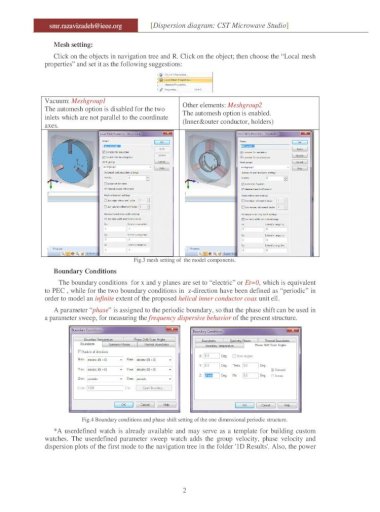

The way one specifies the propagation constant is by using periodic boundary conditions with a Phase Shift. We wish to find frequencies for a range of values of the propagation constant. In the Navigation Tree, right click each port, to bring up the context menu, and select delete. We won’t need the waveguide ports, in fact, they will cause an error, so we well delete them. The Teflon will be modeled as a material with a constant, real-valued, permittivity, of 2.1. frequency dependent) material properties significantly slow computation and complicate the results, so we will use the default solver settings which ignore such properties. The Eigenmode Solver, can find this relationship for multiple bands, but we will look at just the lowest band. This relationship conveys a lot of information, particularly the phase (and group) velocity, and thus the refractive index. How is the agreement now?įrom the Eigenmode Solver we can obtain the dispersion relation, that is the functional relationship between the frequency, ω, and the propagation constant, β. Re-do the graphs, as in 2 above, with the new data. You don’t need to re-run the adaptive meshing, so keep that box unchecked.)ĥ. button in the Boundary Conditions panel.ĭo the same for the other port, then re-run the simulation and export the data. You can check or change these settings by clicking the Open Boundary. The open (add space) boundary assignment has added some background media of thickness equal to one eighth of the wavelength (in the background medium) at the center frequency (12.5 GHz).

We will accomplish this by shifting the port reference planes. Now we will fix the problem by de-embedding the simulation S-parameters. The design of the dipole antenna used in this study is as shown in Figure 1. The proposed design parameters of the half-wave dipole antenna have been simulated by using the CST Microwave Studio 2019 software. Explain why these results do not show agreement between simulation and analytical results. The half-wave dipole antenna has been designed at a resonant frequency 2.45GHz. (Make sure you conjugate either the simulation or analytical results so that both use the same time harmonic function convention.) Make a second graph of this type for S 21.Ĥ. Typically, CST is used in electromagnetic problem solving.
#CST MICROWAVE STUDIO FOR LOW FREQUENCIES EDABOARD SOFTWARE#
On one graph plot the real and imaginary parts of S 11 versus frequency, both from simulation and equation 1 and 2. Numerical simulations were performed with the help of a familiar software known as Computer Simulation Technology (CST) Microwave Studio. What is the significance of the frequencies at which S 11 is a minimum? (Hint: consider the phase advance that a wave undergoes making a round trip inside the Teflon slab.) Do these frequencies agree with the simple formula that describes the condition? (You can use the nominal value of 2.1 for the permittivity of the medium for calculating the wavelength or propagation constant.)ģ. Now lets see if the simulation and analytical results agree in phase as well as magnitude.Ģ.


 0 kommentar(er)
0 kommentar(er)
